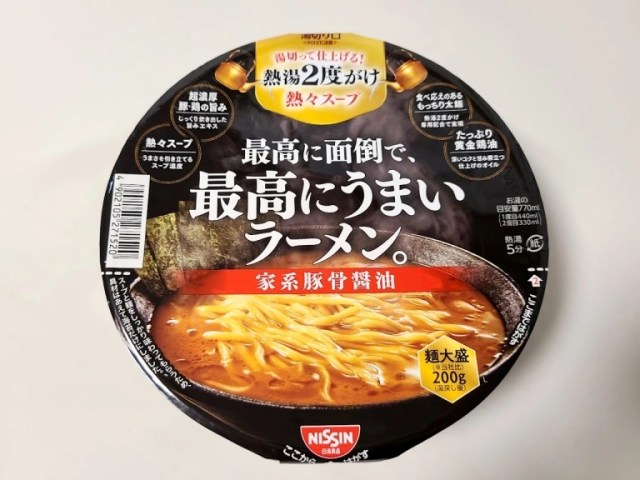
Cup Noodle maker tells us upfront that this is going to be a hassle, but is it worth the time and energy?
Why do we eat instant ramen?
“Because it tastes good!” you may be shouting at your monitor, between mouthfuls of noodles. That’s something you can say about all ramen though. The reason we find ourselves stocking up on and repeatedly reaching for the instant kind is because it’s not only delicious, but convenient too.
So it’s a bold move on the part of an instant noodle maker to bring out a new product and tell us right upfront that making it is a pain in the butt by giving it the name Saikou ni Mendou de Saikou ni Umai Ramen, “Ramen That’s the Biggest Hassle to Make and Also the Most Delicious.”
▼ Ramen That’s the Biggest Hassle to Make and Also the Most Delicious is available exclusively at 7-Eleven, so if you don’t have a branch near you, that’s one more hassle to deal with in order to eat it.
These pain-in-the-butt noodles are the latest brainchild of Nissin, the makers of Cup Noodle and the inventors of instant ramen, so it’s not like the company is incapable of making ramen that’s easy to make. But we were curious to see what happens when any pretense of convenience is tossed out the window, and so we picked up a pack for 430 yen (US$3.25).
Peel the lid back to the dotted line (which is about 40 percent of the way across the top of the bowl, not in the center), and you’ll find four packets sitting on top of the dried noodles. These all need to be added in at different times, but the very first step is to boil some water and pour it into the bowl, up to the line indicated by the indention on the inner surface, for the noodles to cook.
Then, take the blue pack, which contains the tonkotsu (pork stock) soy sauce broth base, and the gold one (which has chicken broth) and place them on top of the lid. You’re supposed to use these two packs specifically because they’re heavier than the others, which contain dashi powder and nori seaweed strips.
Now, leave the noodles to cook in the hot water for five minutes. Yes, five. Just about every other type of instant ramen in the world cooks in three minutes, but for some reason, Nissin’s Hassle noodles need five.
Once that’s done, you need to peel back another section of the lid, the part circled in red here.
Do that, and it’ll reveal a built-in strainer that you can use to pour out the water.
Now take the red packet, which has a powdered mixture of chicken and pork dashi, and pour that into the bowl. Boil some more water, and fill the bowl up to the line again.
Now open up the blue broth base packet, pour that into the bowl, and mix everything together using your chopsticks or a spoon. Once everything is nice and blended, open up the gold packet and pour it in. Don’t just tip the packet over and spill everything out in the same spot, though. You’re supposed to add it gradually, moving the packet in a circular motion around the bowl to keep things evenly distributed.
Finally, tear open the last packet, which contains the nori slices, and arrange them in an aesthetically pleasing manner at the edge of the bowl.
And with that, you’re finally done, and it’s time to eat! Taste-testing duties (as well as the hassle of making the ramen) fell to our Japanese-language reporter Maro, and from the first bite, he could tell that the results were different from your average instant ramen.
The noodles were exquisitely smooth, and the broth was busting with flavor. The style is ie-kei, which was popularized in Yokohama and blends pork stock and soy sauce for a hearty, substantial-feeling broth, and the large amount of chicken broth Nissin adds made it even better. Plus, since you cook the noodles first, then add boiling water a second time to prepare the broth, it’s piping hot, just like Japanese ramen fans like it.
Maro isn’t sure he’d go so far as to call the Ramen That’s the Biggest Hassle to Make and Also the Most Delicious the best instant ramen he’s ever had, but the extra inconvenience you invest in making it definitely pays off.
There is one drawback, though, which is that the nori slices are the only topping you get. On the one hand, that makes for a very pure, focused eating experience, but you might find yourself craving a few more fixings. Luckily, ie-kei ramen goes great with just about anything, and if you’ve got some sliced pork, boiled eggs, or spinach handy, those would all make exceptionally excellent additions.
Alternatively, you could eat Ramen That’s the Biggest Hassle to Make and Also the Most Delicious with a side dish of plain white rice, and make it not quite so plain by dunking a strip of nori into the ramen, then transferring it to the rice bowl, letting the broth drip into the grains, and making what’s essentially a mini ramen-flavored rice ball when you pick up a mouthful with your chopsticks.
Yeah, all those are a little extra work, but they taste so good that the hassle is easily worth it, and we gave up on convenience here at the very start.
Photos © SoraNews24
● Want to hear about SoraNews24’s latest articles as soon as they’re published? Follow us on Facebook and Twitter!
[ Read in Japanese ]

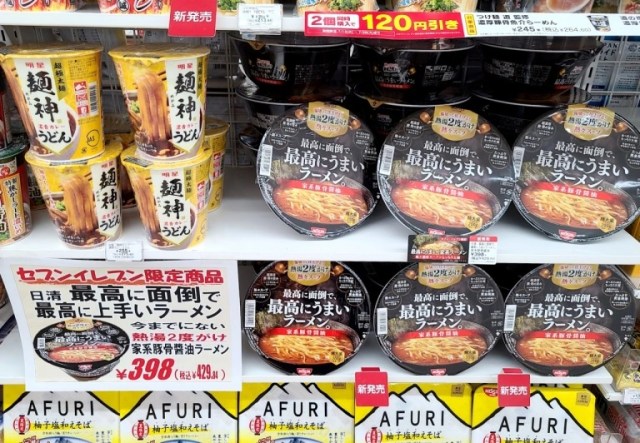
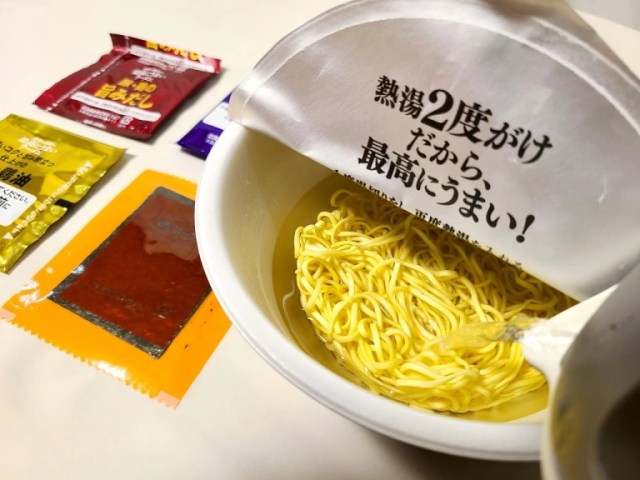
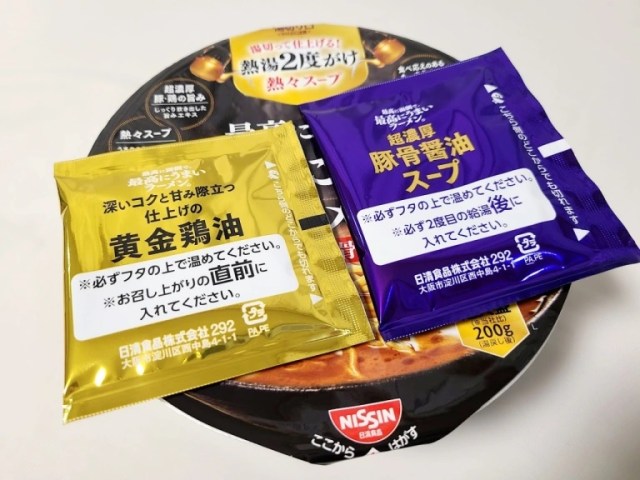
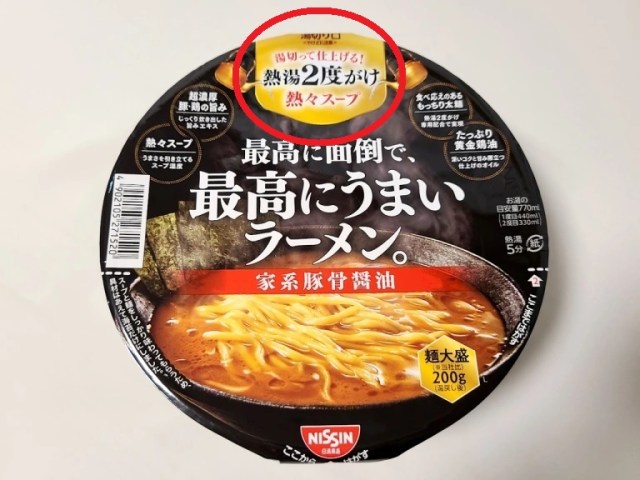
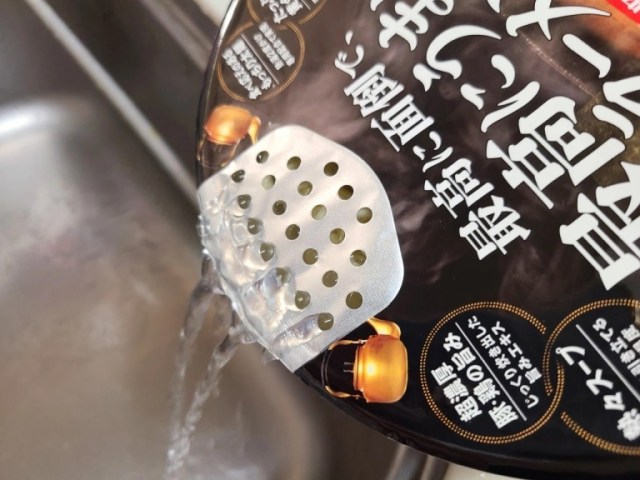
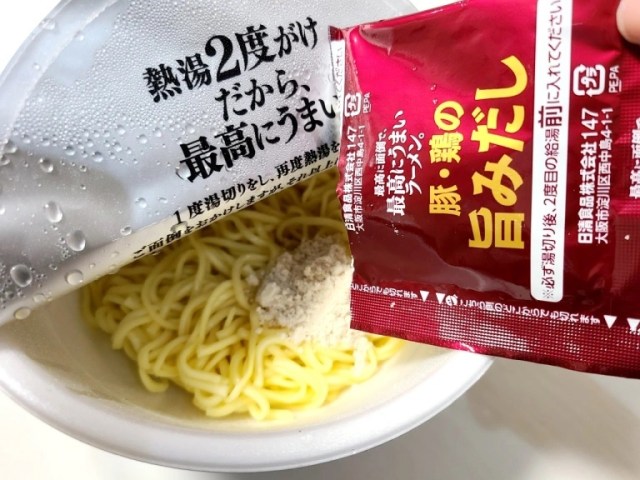
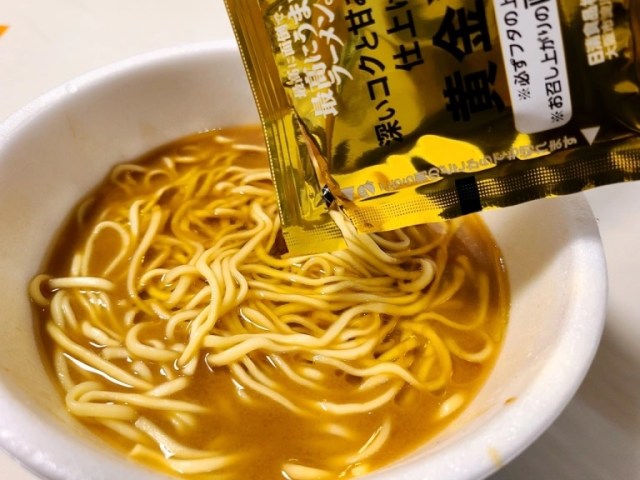
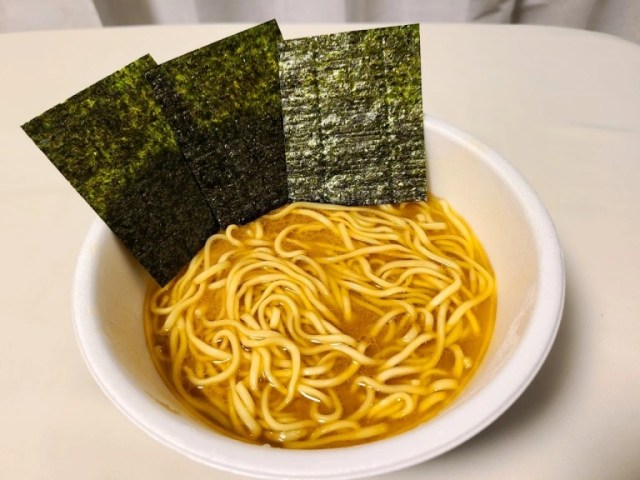
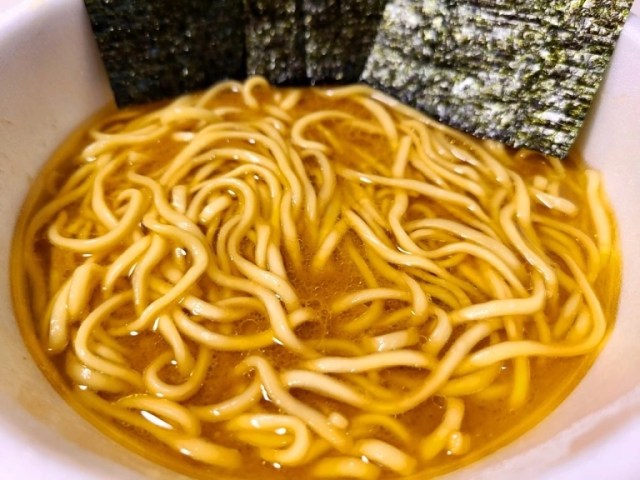
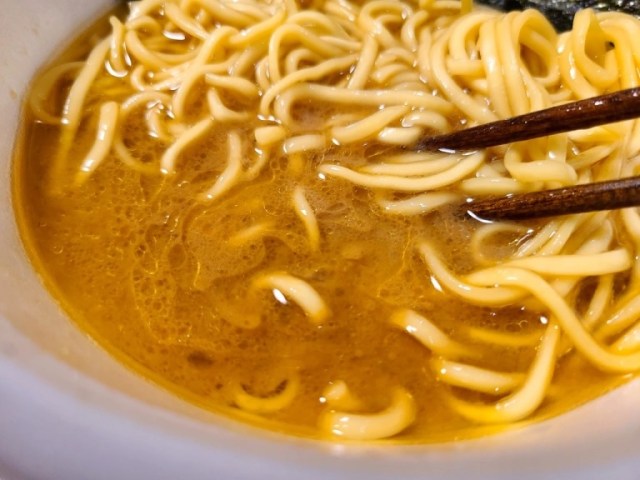
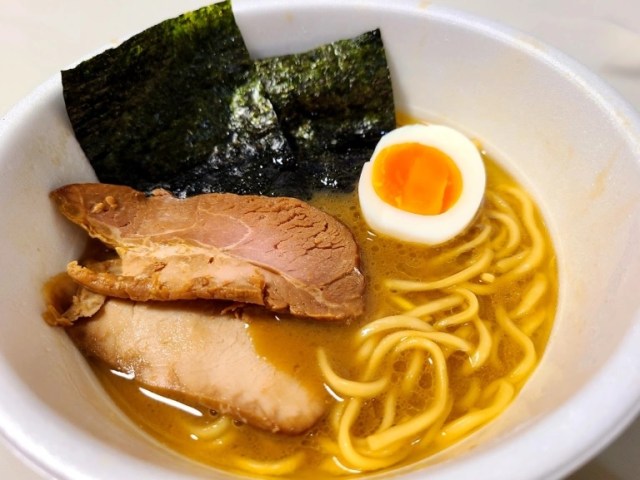
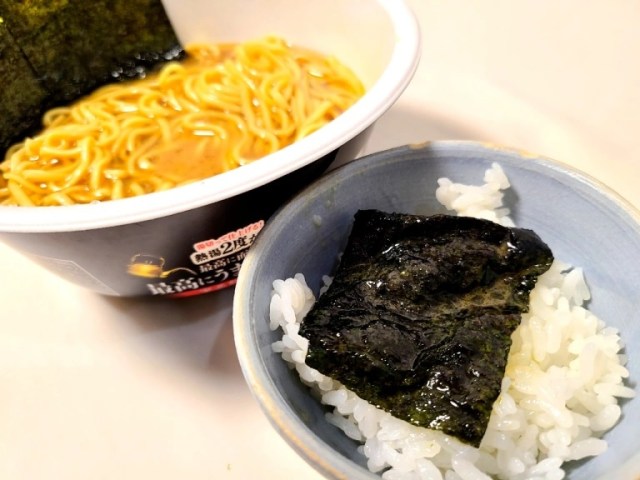
 Tokyo’s new frozen ramen vending machines are brain-breakingly amazing【Taste test】
Tokyo’s new frozen ramen vending machines are brain-breakingly amazing【Taste test】 Clever new packaging trick helps make it easier to eat instant ramen without ruining your health
Clever new packaging trick helps make it easier to eat instant ramen without ruining your health How to make yoghurt ramen with instant noodles
How to make yoghurt ramen with instant noodles What does vegan ramen taste like? We try Veggie Brown Rice Ramen
What does vegan ramen taste like? We try Veggie Brown Rice Ramen How to make tonkotsu ramen at home 【SoraKitchen】
How to make tonkotsu ramen at home 【SoraKitchen】 Foreigner’s request for help in Tokyo makes us sad for the state of society
Foreigner’s request for help in Tokyo makes us sad for the state of society Should you add tartar sauce to Japanese curry rice? CoCo Ichi makes diners an unusual offer
Should you add tartar sauce to Japanese curry rice? CoCo Ichi makes diners an unusual offer Japanese city loses residents’ personal data, which was on paper being transported on a windy day
Japanese city loses residents’ personal data, which was on paper being transported on a windy day Harajuku Station’s beautiful old wooden building is set to return, with a new complex around it
Harajuku Station’s beautiful old wooden building is set to return, with a new complex around it Seaside scenery, history, and so many desserts on Yokohama’s Akai Kutsu【Japan Loop Buses】
Seaside scenery, history, and so many desserts on Yokohama’s Akai Kutsu【Japan Loop Buses】 Red light district sushi restaurant in Tokyo shows us just how wrong we were about it
Red light district sushi restaurant in Tokyo shows us just how wrong we were about it Limited-edition Carbonara Udon will anger noodle purists and pasta lovers 【Taste test】
Limited-edition Carbonara Udon will anger noodle purists and pasta lovers 【Taste test】 Akihabara pop-up shop sells goods made by Japanese prison inmates
Akihabara pop-up shop sells goods made by Japanese prison inmates Japan’s massive matcha parfait weighs 6 kilos, contains hidden surprises for anyone who eats it
Japan’s massive matcha parfait weighs 6 kilos, contains hidden surprises for anyone who eats it French Fries Bread in Tokyo’s Shibuya becomes a hit on social media
French Fries Bread in Tokyo’s Shibuya becomes a hit on social media McDonald’s new Happy Meals offer up cute and practical Sanrio lifestyle goods
McDonald’s new Happy Meals offer up cute and practical Sanrio lifestyle goods Japanese ramen restaurants under pressure from new yen banknotes
Japanese ramen restaurants under pressure from new yen banknotes Studio Ghibli releases new action figures featuring Nausicaä of the Valley of the Wind characters
Studio Ghibli releases new action figures featuring Nausicaä of the Valley of the Wind characters New private rooms on Tokaido Shinkansen change the way we travel from Tokyo to Kyoto
New private rooms on Tokaido Shinkansen change the way we travel from Tokyo to Kyoto Tokyo Tsukiji fish market site to be redeveloped with 50,000-seat stadium, hotel, shopping center
Tokyo Tsukiji fish market site to be redeveloped with 50,000-seat stadium, hotel, shopping center Beautiful Ghibli sealing wax kits let you create accessories and elegant letter decorations【Pics】
Beautiful Ghibli sealing wax kits let you create accessories and elegant letter decorations【Pics】 Studio Ghibli releases Kiki’s Delivery Service chocolate cake pouches in Japan
Studio Ghibli releases Kiki’s Delivery Service chocolate cake pouches in Japan New definition of “Japanese whiskey” goes into effect to prevent fakes from fooling overseas buyers
New definition of “Japanese whiskey” goes into effect to prevent fakes from fooling overseas buyers Our Japanese reporter visits Costco in the U.S., finds super American and very Japanese things
Our Japanese reporter visits Costco in the U.S., finds super American and very Japanese things All-you-can-drink Starbucks and amazing views part of Tokyo’s new 170 meter-high sky lounge
All-you-can-drink Starbucks and amazing views part of Tokyo’s new 170 meter-high sky lounge More foreign tourists than ever before in history visited Japan last month
More foreign tourists than ever before in history visited Japan last month New Pokémon cakes let you eat your way through Pikachu and all the Eevee evolutions
New Pokémon cakes let you eat your way through Pikachu and all the Eevee evolutions Disney princesses get official manga makeovers for Manga Princess Cafe opening in Tokyo
Disney princesses get official manga makeovers for Manga Princess Cafe opening in Tokyo Sales of Japan’s most convenient train ticket/shopping payment cards suspended indefinitely
Sales of Japan’s most convenient train ticket/shopping payment cards suspended indefinitely Sold-out Studio Ghibli desktop humidifiers are back so Totoro can help you through the dry season
Sold-out Studio Ghibli desktop humidifiers are back so Totoro can help you through the dry season Japanese government to make first change to romanization spelling rules since the 1950s
Japanese government to make first change to romanization spelling rules since the 1950s Ghibli founders Toshio Suzuki and Hayao Miyazaki contribute to Japanese whisky Totoro label design
Ghibli founders Toshio Suzuki and Hayao Miyazaki contribute to Japanese whisky Totoro label design Doraemon found buried at sea as scene from 1993 anime becomes real life【Photos】
Doraemon found buried at sea as scene from 1993 anime becomes real life【Photos】 Tokyo’s most famous Starbucks is closed
Tokyo’s most famous Starbucks is closed One Piece characters’ nationalities revealed, but fans have mixed opinions
One Piece characters’ nationalities revealed, but fans have mixed opinions We asked a Uniqlo employee what four things we should buy and their suggestions didn’t disappoint
We asked a Uniqlo employee what four things we should buy and their suggestions didn’t disappoint Princesses, fruits, and blacksmiths: Study reveals the 30 most unusual family names in Japan
Princesses, fruits, and blacksmiths: Study reveals the 30 most unusual family names in Japan How to turn your leftover instant ramen broth into delicious chawanmushi Japanese egg custard
How to turn your leftover instant ramen broth into delicious chawanmushi Japanese egg custard Ramen vending machine in Tokyo satisfies noodle and gyoza cravings at any time of day or night
Ramen vending machine in Tokyo satisfies noodle and gyoza cravings at any time of day or night New Zero-Second Chicken Ramen leaves us zero reasons not to be eating ramen right now
New Zero-Second Chicken Ramen leaves us zero reasons not to be eating ramen right now Mos Burger opens fried chicken ramen pop-up restaurant serving free food in Tokyo
Mos Burger opens fried chicken ramen pop-up restaurant serving free food in Tokyo This amazing bowl of meaty ramen? Made entirely with Japanese convenience store stuff
This amazing bowl of meaty ramen? Made entirely with Japanese convenience store stuff This super easy cold Korean spicy ramen dish will make summer 100 times more delicious
This super easy cold Korean spicy ramen dish will make summer 100 times more delicious Craving ramen, but can’t find decent noodles? Transform your spaghetti with this pasta hack!
Craving ramen, but can’t find decent noodles? Transform your spaghetti with this pasta hack! We try out Nissin’s new Cup Noodle Broth Hardening Powder to see if it really works
We try out Nissin’s new Cup Noodle Broth Hardening Powder to see if it really works Clash of the instant ramen! Taste-testing seven instant noodles on a flavor trip across Kyushu
Clash of the instant ramen! Taste-testing seven instant noodles on a flavor trip across Kyushu We try “almost sea urchin” Cup Noodle, the latest chapter in instant ramen trickery【Taste test】
We try “almost sea urchin” Cup Noodle, the latest chapter in instant ramen trickery【Taste test】 We try the new Zero-Second Chicken Ramen: Is it worth the hype?【Taste Test】
We try the new Zero-Second Chicken Ramen: Is it worth the hype?【Taste Test】 Making spicy instant ramen fried rice, Korea’s latest viral food trend【SoraKitchen】
Making spicy instant ramen fried rice, Korea’s latest viral food trend【SoraKitchen】 How to turn Cup Noodle instant ramen into delicious Osaka-style dumplings【SoraKitchen】
How to turn Cup Noodle instant ramen into delicious Osaka-style dumplings【SoraKitchen】 First ever Pringles instant cup ramen noodles are coming to Japan
First ever Pringles instant cup ramen noodles are coming to Japan Japan’s chicken nugget French fry instant ramen will fill you up with two comfort foods at once
Japan’s chicken nugget French fry instant ramen will fill you up with two comfort foods at once
Leave a Reply